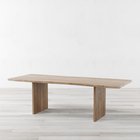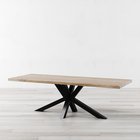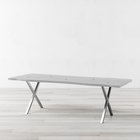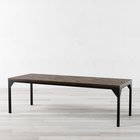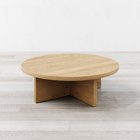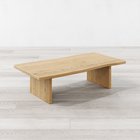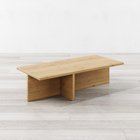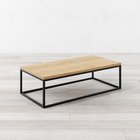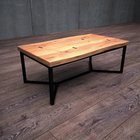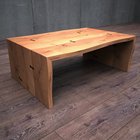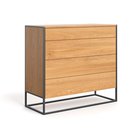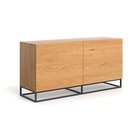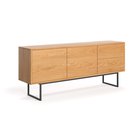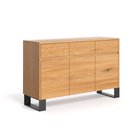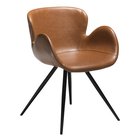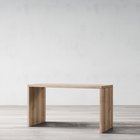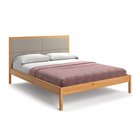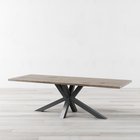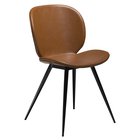When choosing a dining table, one of the most important decisions is which type of wood to select. The wood needs to be durable to withstand daily use and cleaning, but also attractive to match your decor. Certain woods are better suited for kitchen tables than others based on factors like hardness, grain, stainability, and cost.
In this article, we will compare some of the most popular and the best wood for tables to help you determine the option for your home.
Oak
An oak dining table stands as a timeless choice not only for dining surfaces but also for various other furniture selections. It is a dense hardwood that ranges in color from white oak with a light tan appearance to red oak with a reddish-brown hue. Oak has a pronounced grain pattern that looks beautiful with stains and finishes. It also has a natural resistance to scratches and dents due to its density and has a moderate cost. Oak complements both traditional and modern home decor styles.
The downside of oak is that the porous nature of the wood can show water marks if not properly sealed. The grain also splinters easily during construction. However, its durability and timeless beauty make it one of the best wood for dining table.
Walnut
Walnut wood has a rich, dark brown coloration and flowing grain pattern. It looks elegant for formal dining rooms but also adapts well to more casual spaces. The wood is naturally resistant to dents and scratches and is also less porous than oak. This makes walnut tables more resistant to water damage. The walnut stains nicely to enhance its beautiful grain patterns.
The major drawback of this tree is the high cost. Walnut lumber is relatively rare and difficult to source sustainably, so furniture made from this solid tree commands a premium price. However, the smooth finish and luxurious look make walnuts worth the investment for many homeowners.
Pine
Pine is an affordable softwood that takes stain well. There are several varieties of pine like southern yellow pine and eastern white pine that have different grain patterns but all have a light tan natural color. Pine is also environmentally friendly as one of the most abundant and renewable woods.
Since pine is a softwood, it can dent and scratch more easily than hardwoods. Pine also has a noticeable grain pattern due to its soft nature. While pine makes beautiful rustic dining tables, the softness requires more care and maintenance to keep it looking pristine. Using pine for a dining table top and hardwoods for the bases provides a compromise.
Maple
Maple is a versatile material suitable for both formal and casual kitchen spaces. It has a fine, straight grain that gives an understated elegance. The light color ranges from nearly white to light brown. Maple takes stains evenly for customized looks. It is also dense and durable, making it very functional wood for dining table top use.
The downside to maple is that it lacks the dramatic grain patterns found in woods like oak and walnut. Maple also costs more than pine but less than exotic hardwoods. While maple is beautiful, it does not make a strong style statement like other woods.
Mahogany
Mahogany has a distinctive reddish-brown coloration and striking grain pattern. It has a timeless character that looks elegant in traditional eating rooms but also in modern spaces with the right stain. Mahogany is naturally resistant to scratches and wear. It is also among the most durable woods for dining tables.
True mahogany imported from tropical regions can get very expensive and raises environmental sustainability concerns. More affordable alternatives include African mahogany and American mahogies like Honduran mahogany. Still, mahogany costs more than woods like oak or maple. The cost can be justified by the classic beauty and longevity of a mahogany kitchen table.
Teak
Teak has a one-of-a-kind appearance with a golden brown color, natural oils, and distinctive grain patterns. It has natural weather and moisture resistance. The Teak holds up well over time and does not require a protective finish. The natural oils also give teak antimicrobial properties. This makes teak an excellent wood for eating tables either indoors or outdoors.
However, teak furniture comes at a steep price. Due to high demand and dwindling supplies, teak wood must be imported and is not very eco-friendly. Teak dining tables may cost several times more than other hardwood options. But teak's resilience and gorgeous appearance offer an heirloom-quality dining table that justifies the investment for many.
Choosing the Best Wood for Your Dining Table
When selecting an eating table wood, consider the overall style you want to achieve, your budget, and how it will stand up to use over time. More durable hardwoods like oak, walnut, maple, and mahogany make the best dining table tops that will last for years.
More affordable softwoods can be used selectively for rustic kitchen tables or table bases. Chat with your furniture builder for advice on picking the ideal wood for your new table. With some careful selection, you can choose a beautiful wood to match your dining space.

